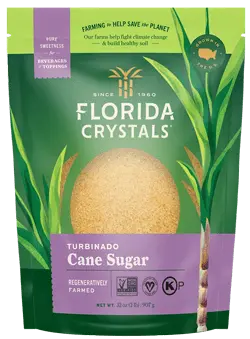Cane Sugar Processing: Innovative Strategies for Top Quality Production
Cane Sugar Processing: Innovative Strategies for Top Quality Production
Blog Article
An In-Depth Overview to the Ecological Effect and Sustainability Practices in Walking Cane Sugar Handling
The environmental impact of walking stick sugar handling provides a complicated selection of challenges that warrant cautious exam. From dirt destruction and too much water usage to the carbon impact linked with farming and production, the effects of traditional practices are significant. What details practices can be carried out to strike an equilibrium in between performance and ecological stewardship?
Overview of Walking Stick Sugar Handling
Cane sugar processing entails a collection of organized steps that change sugarcane right into refined sugar. Initially, gathered sugarcane is delivered to processing facilities, where it goes through cleaning up to remove dirt and particles. Following this, the cane is crushed to draw out juice, which is after that clarified by removing pollutants with home heating and the addition of lime.
The clarified juice goes through dissipation, where water is gotten rid of to focus the sugar web content. This focused syrup is then taken shape with air conditioning, enabling sugar crystals to form. These crystals are divided from the continuing to be syrup making use of centrifugation, leading to raw sugar. To attain polished sugar, the raw item undergoes more filtration processes, which might consist of filtering and cleaning to get rid of staying contaminations and color.
The final item is then dried and packaged for distribution. Throughout this whole procedure, preserving efficiency and quality assurance is important to make sure the sugar fulfills market requirements. Each step in walking cane sugar handling not only adds to the last product yet additionally has effects for resource usage and waste generation, establishing the phase for discussions on sustainability and ecological effects connected with sugar production.
Environmental Challenges of Production
The production of walking cane sugar offers numerous significant ecological difficulties that warrant attention. One key problem is the substantial usage of agrochemicals, including plant foods and pesticides, which can lead to soil destruction, biodiversity loss, and contamination of local water resources. The overflow from sugarcane areas commonly carries these chemicals right into neighboring environments, interrupting aquatic life and affecting the health of communities reliant on these water bodies.
Another difficulty is the high energy consumption related to sugarcane processing. The boiling and refining stages require considerable warmth, mainly produced by shedding nonrenewable fuel sources, adding to greenhouse gas emissions. In addition, the extensive acreage required for sugarcane cultivation can cause deforestation and environment devastation, additional intensifying environment change and threatening wildlife.
Additionally, the labor practices in some regions elevate ethical worries, as employees may deal with poor working problems and poor salaries. This scenario usually bolsters a cycle of destitution in local neighborhoods. Cane Sugar Processing. Attending to these environmental obstacles is critical for establishing a lot more sustainable practices in walking stick sugar production, eventually benefiting both the atmosphere and the neighborhoods involved in this sector
Water and Land Usage Effect
Water sources and land utilization are essential components in the walking stick sugar industry that substantially impact the environment. The cultivation of sugarcane requires significant water input, with quotes recommending that it can take in up to 2,000 liters of water read review per kg of sugar produced. This extensive use water often leads to exhaustion of local water sources, influencing not just the sugarcane vineyards but also bordering ecological communities and communities that depend on the same water sources for farming and residential usage.

In addition, land usage for sugarcane farming can lead to logging and the conversion of all-natural environments into monoculture haciendas. This practice diminishes biodiversity, disrupts local ecological communities, and adds to dirt destruction. The growth of sugarcane areas frequently encroaches on beneficial agricultural land, developing competition for sources in between food and biofuel manufacturing.
Sustainable practices, such as optimizing watering strategies and carrying out crop turning, are vital company website to alleviate these effects. By embracing much more efficient water use and land monitoring approaches, the walking stick sugar industry can lower its ecological impact, making sure a balance between agricultural efficiency and environmental conservation.
Greenhouse Gas Emissions
Greenhouse gas emissions stand for a significant environmental issue within the cane sugar handling market, especially as agricultural methods expand to satisfy global demand. The farming of sugarcane, a plant that flourishes in tropical climates, counts heavily on synthetic fertilizers and chemicals, which add to nitrous oxide emissions. Furthermore, land-use adjustments, consisting of logging for brand-new sugarcane plantations, release co2 stored in greenery and soil.
During processing, power usage is one more significant resource of greenhouse gas exhausts - Cane Sugar Processing. Numerous sugar mills use fossil gas to power machinery and create warm, leading to significant carbon footprints. Additionally, the transport of raw sugarcane and ended up products adds layers of discharges through gas burning in vehicles
This entails reviewing current agricultural practices, refining approaches, and transportation systems to determine locations for improvement and mitigation. Addressing greenhouse gas emissions is essential for promoting a more sustainable walking cane sugar industry in an altering environment.

Lasting Practices and Innovations
Sustainable techniques and developments are progressively important in the walking stick sugar processing industry as stakeholders look for to decrease ecological influences while maintaining efficiency. One considerable development is the implementation of integrated crop management, which enhances source usage by incorporating dirt monitoring, insect control, and crop turning methods. This approach boosts return while minimizing chemical inputs and preserving soil health.
In addition, the adoption of sustainable power resources, such as biomass from sugarcane residues, has actually gained grip - Cane Sugar Processing. By transforming waste items right into energy, processing centers can reduce their dependence on fossil fuels, consequently lowering greenhouse gas exhausts
Water administration methods have actually also seen enhancements with the recycling and reusing of water in processing plants, dramatically lowering freshwater intake. Innovations in innovation, such as precision farming, make it possible for farmers to keep track of crop health and resource use better, ensuring sustainable cultivation methods.
Moreover, qualification programs like Fair Profession and Rain forest Alliance encourage ecologically liable farming techniques and advertise social equity within the supply chain. By embracing these lasting methods and developments, the walking cane sugar handling sector can boost its durability and add favorably to ecological stewardship.
Verdict
The environmental influence of walking cane sugar handling presents considerable obstacles, consisting of dirt deterioration, high water intake, and greenhouse gas discharges, together with ethical worries associated with labor practices. Addressing these issues with sustainable practices, such as integrated crop management, sustainable power adoption, and water recycling, is essential. By promoting ecologically liable and socially fair approaches in sugar production, learn the facts here now the industry can alleviate its adverse impacts, making certain an extra lasting future for both ecological communities and areas associated with this market.
Cane sugar handling includes a collection of organized steps that change sugarcane right into polished sugar. Each step in walking cane sugar processing not just contributes to the last product but also has effects for resource use and waste generation, establishing the phase for discussions on sustainability and environmental impacts connected with sugar production.
Greenhouse gas discharges represent a considerable environmental problem within the walking stick sugar processing market, particularly as farming practices broaden to meet international need.Sustainable practices and developments are significantly important in the walking cane sugar handling industry as stakeholders seek to reduce ecological effects while preserving efficiency.The ecological effect of walking cane sugar handling offers significant obstacles, including dirt deterioration, high water intake, and greenhouse gas emissions, alongside honest concerns associated to labor techniques.
Report this page